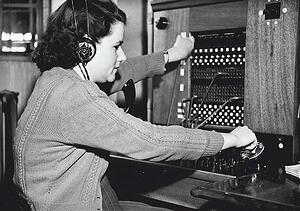Fax messaging is still a relevant technology and many businesses continue to use it to this day. As the business landscape has evolved so has the technology that runs our communications, traditional fax is lagging behind, but users have some options.
Today, most businesses have turned to VoIP to run their phone communications, and many are working towards bundling all their services using the same technology.
Many of those companies that rely on fax messaging services have also turned to VoIP in an attempt to manage their fax communications, only to experience pain and disappointment when problems arise.

The simple reason for this headache is that the technologies are not the same and don’t work the same way.
Consider shipping, for instance, a train can transport a ton of goods across neighboring coastal lands. So can a ship, however, you would expect a delay if your many packages had to be shipped using both trains and multiple cargo ships, on multiple different shipments. Some packages are liable to get lost.
VoIP and analog fax services are similar in this fashion. They both use different methods for packing and shipping, and they both take a different amount of time to transport, pack, and assemble a message.
Let’s Rewind a Bit to Analog Fax Using PSTN
In the early days of fax messaging, fax was designed and built to run on the Publicly Switched Telephone Network (PSTN). The same old, copper networks that has largely been replaced by VoIP phone services today, always worked great for fax.
Back then it was pretty simple to plug a fax machine into a dedicated jack and send a fax.
The reason it was so easy is that these old telephone networks utilized an analog protocol known as T.30.

Fax machines were designed to run on this T.30 protocol, which allowed fax messages to be transmitted, from one fax machine to another, uncompressed, using the phone’s audio tone.
VoIP services transmit data in packets. It does so by breaking down information, compressing, and transmitting it in pieces.
The receiving end uncompresses these packets and reorganizes them to compose the final message.
As data packets are transmitted some may get lost or may become delayed. Additionally, packets are unpacked and reorganized in the order they are received .
When it comes to VoIP phone calls, we can excuse some packet loss. Our human ears will not notice most, but in cases where packet loss is high, one will experience audio loss we interpret as blips, jitter, or delay.
The amount of packet loss in a phone call does not typically translate into enough audio loss to ruin or drop a phone call. Perhaps just enough to prompt us to ask “Can you repeat that, please?”
Fax messaging uses audio tones to communicate. Anyone who has accidentally called a fax line has experienced this fax tone in person.
This intricate fax tone communicates to a receiving fax machine the information to print on paper. The T.30 protocol does not compress this signal so there is little chance of delay being introduced into the transmission.
VoIP works on T.38 protocol, meaning that a T.30 protocol message coming from a fax machine must first be translated to a different protocol before it can be shipped in packets.
Not only do faxes experience the threat of packet loss from compressing the message into packets, but also experience the threat of delay caused by translating protocols, on both ends.
While not impossible to send a fax via VoIP, one may find that simple one-page messages have a greater chance of making it through while larger messages have a greater risk of failure.
Until fax machines update to a new protocol, this will be an ongoing problem for all VoIP providers
Considering that fax messaging has been written off by many in the industry, and updates are now few and far between, we can faithfully say that we don’t see a new protocol coming anytime soon that would solve this problem.
Most VoIP providers will continue to recommend users maintain an analog line in the office for such reasons.
Faxing from VoIP is an industry-wide concern, but providers like RingPlan provide a digital fax alternative.
Although digital fax options are available, some industries remain dedicated to using traditional fax machines because they just cannot compromise their standards.
For industries such as the medical or legal industry, the risk of losing a fax message is not worth the potential consequences. Many choose to keep the analog line, while others continue to search the internet for digital faxing service that meets HIPPA requirements.
While using VoIP for Fax can help you bundle services and save money, if you are held to standards such as those outlined by HIPPA, you may decide going 100% analog or searching for HIPPA friendly fax providers that specialize in HIPPA Faxing or equivalent. Ask us about HIPPA-Friendly Fax.
A user looking to save time and money by bundling their fax with VoIP service will experience some difficulties along the way. The users must assess what is important for them and choose either digital fax over VoIP, a traditional fax machine connected to VoIP via analog phone adapter, or keeping a traditional fax machine running on a dedicated analog line. Packet loss can prevent larger messages from being transmitted via digital fax because fax machines are designed to run on the T.30 protocol. This data must be translated to T.38 before being compressed and transmitted to a receiving end. The process introduces many places for a fax message to fail because fax machines do not work well with lost or delayed data packets, typically dropping a large message when data making up the fax is missing at the time of a fax being received.